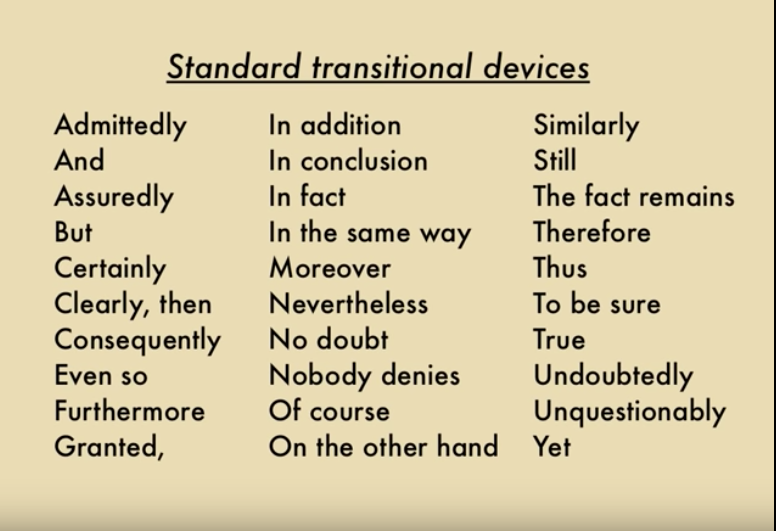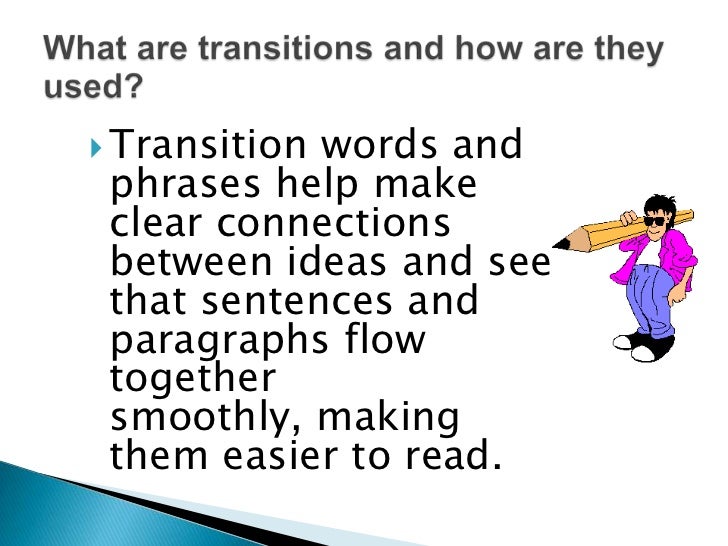
This makes the reader feel as though the paragraph and the point made in the paragraph are complete. Most paragraphs try to have a conclusion that is nice and tidy. Transitions do this by concluding one paragraph and opening another. Transitions also help us move smoothly from one paragraph to the next. While the order seems logical in this sentence, transitions become very helpful when the order of events is confusing or there are lots of events happening. We know the order because of the transitions.

The speaker went to the store and then set up the tank. The transitions “First” and “Then” help us understand the order of events. Then, we went home to set up the tank for the fish. Here is an example of using a transition of time to show when events happened:įirst, we went to the store to buy a fish. They can demonstrate in what order something happens, when something happened, or how often something happens. Transition words can also be used to show time.

We move from the idea that the speaker likes cats because they are cute to the fact that the speaker thinks that cats are good hunters. You see that “Also,” helps us move from one idea to another. I have always liked cats because they are small and cute. Here is an example of using one these transitions: Sometimes you may want to add on to an idea you have already expressed, and transitions of addition can help you add ideas or information. Transition words can be used to show addition. It would hard for readers to immediately jump from one idea to the next, so transitions help the reader move smoothly through the ideas instead. These words help the reader smoothly through ideas by creating a bridge between them. Transition words are words that help connect or link ideas, phrases, sentences, or paragraphs.

Transition words between paragraphs download#

Pay attention to how the following transitions were used in the paragraph below: while, currently, in fact, however, and ultimately.


 0 kommentar(er)
0 kommentar(er)
